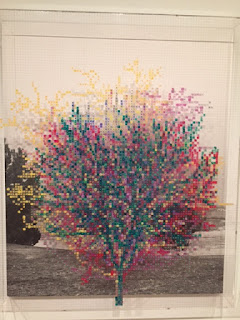The Fowler Museum
Making Strange by Vivan Sundaram
This collection of work consists of two projects, Gagawaka
and Postmortem. Gagawaka is a collection of garments made out of medical
supplies and recycled items. The garments are Sundaram’s own take on the world
of fashion. I found his recycled material outfits to be fun and creative. These
outfits focus on interesting ways to cover the body and the aesthetics of
everyday materials.
His medical supply outfits were also very creative but they
also represented the painful and a more serious side of real everyday life.
The second project, Postmortem consists of mannequins and dummies
of human skeletal, vascular, and organ system. These sculptures are meant to focus
more on the body itself and force you to look at body parts and movement in a
different way. Similar to the outfits that are made out of medical supplies the
Postmortem sculptures are meant to correlate with sickness and aging. Both of
these art installations show a relationship between the artistic world of
fashion and the scientific world of medicine.












